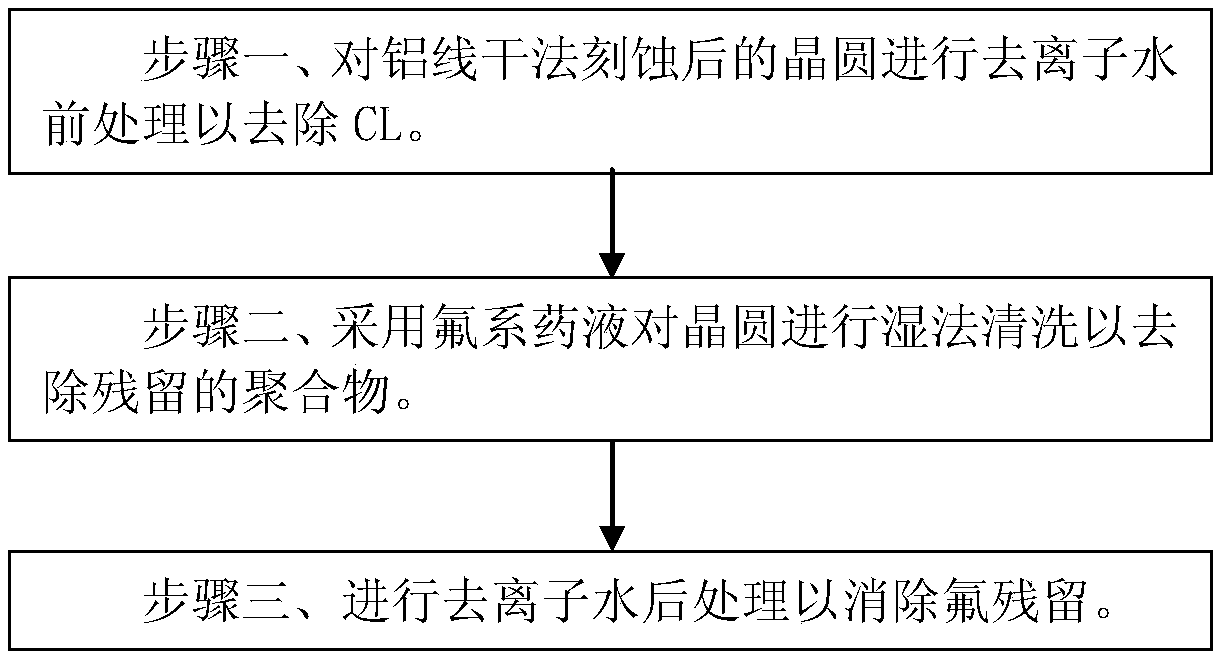Method for wet cleaning after dry etching of aluminum wire
A technology of dry etching and wet cleaning, which is applied in the manufacture of electrical components, semiconductor/solid-state devices, circuits, etc., can solve problems such as aluminum corrosion, achieve the elimination of chlorine residues, fluorine residues, and improve anti-corrosion immunity Effect
- Summary
- Abstract
- Description
- Claims
- Application Information
AI Technical Summary
Problems solved by technology
Method used
Image
Examples
Embodiment Construction
[0027] Such as figure 1 Shown is the flow chart of the method of the embodiment of the present invention. The wet cleaning method after the dry etching of the aluminum wire in the embodiment of the present invention includes the following steps:
[0028] Step 1. Carry out pretreatment on the wafer after the dry etching of the aluminum wire, the pretreatment uses deionized water to treat the surface of the wafer, and the deionized water and the polymer produced after dry etching The residual aluminum chloride reacts to form aluminum hydroxide and chlorine gas, and the chlorine gas is sucked away with the exhaust air in the cleaning machine, thereby removing CL elements. That is, the polymer described in step 1 includes ALCL3, and deionized water reacts with ALCL3 to form A1(OH)3 and CL2 to remove the CL element.
[0029] In the method of the embodiment of the present invention, the cleaning machine is a single-chip cleaning machine, and the pre-treatment, the subsequent wet cl...
PUM
 Login to View More
Login to View More Abstract
Description
Claims
Application Information
 Login to View More
Login to View More - R&D
- Intellectual Property
- Life Sciences
- Materials
- Tech Scout
- Unparalleled Data Quality
- Higher Quality Content
- 60% Fewer Hallucinations
Browse by: Latest US Patents, China's latest patents, Technical Efficacy Thesaurus, Application Domain, Technology Topic, Popular Technical Reports.
© 2025 PatSnap. All rights reserved.Legal|Privacy policy|Modern Slavery Act Transparency Statement|Sitemap|About US| Contact US: help@patsnap.com

